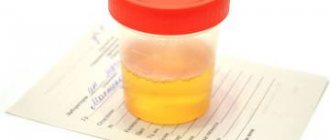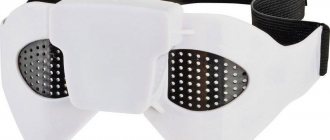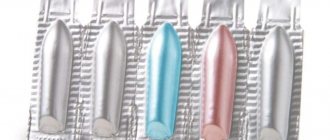How to collect stool for testing
To obtain reliable results when studying any biological material, the conditions and period of its storage are of great importance. Many people do not know whether it is possible to store stool in the refrigerator until the next day and how the test result will be affected by low temperature. In fact, this is the optimal place where the biomaterial is least likely to deteriorate.
Collection rules:
- To check stool for the most commonly prescribed indicators, you cannot give enemas before collecting it. If such a procedure was carried out, you will first have to wait at least 2 days and then take tests.
- Before emptying for laboratory purposes, you should not use laxatives or sorbents.
- Rectal suppositories can also distort the reliability of test results. You should refrain from using them for a day before collecting stool.
For individual studies, it is recommended to adhere to a special diet for 7 days. During this time, you should not eat herbs, foods that contain a lot of fat, salt, or those that are heavily fried.
How long and how to store a urine test
It is recommended to collect urine in sterile plastic containers or dry and clean glass containers. In order for the test results to be reliable, it is necessary to follow the rules for storing biomaterial. If the time and temperature conditions are not observed, the organic substances contained in the urine begin to disintegrate, changing its composition and properties - the processes of cell destruction and the proliferation of various bacteria occur, and the urine becomes unsuitable for research.
For each type of urine test, there are certain storage requirements:
- General (GAM) examination . Morning urine is used for general analysis. The biomaterial can be stored for no more than two hours in the refrigerator at a temperature of +3-4°C. Transportation of the material must be carried out only at a positive temperature; when the urine is “frozen,” a precipitate of salts falls at the bottom of the liquid, which is unacceptable, so in this case the analysis will have to be repeated.
- Analysis according to Nechiporenko . In this case, morning urine is examined in the middle of urination. It is stored and delivered to the laboratory under the same conditions that are observed during a general urine test.
- Urine according to Zimnitsky . Samples are taken in eight separate portions of urine, which are collected throughout the day with an interval of 3 hours. All containers for collecting biomaterial have numbered labels with information about the time of receipt of this portion. Samples in sterile glass containers must be placed in a cool, dark place with a temperature range of +4-8°C, in no case allowing them to freeze. The container with the collected liquid must be tightly closed with a lid. After filling the last container, it is recommended to immediately send the urine to the laboratory to obtain high-quality testing results.
- Kakovsky-Addis method. The total collection time for this test can last from 10 to 12 hours, depending on when the collection begins. It should be stored in a cool place at a temperature of +4-8°C. All urine, without exception, must be collected in one sterile dry jar with a volume of 0.8-1.0 liters, which is marked with the direction and indication of the time of the first and last collection of the analysis. After the last urination, it is necessary to deliver the collected urine to the laboratory as quickly as possible, since within two hours after this the test result may be invalid.
How and where can you store feces for a long time before sending it to the laboratory?
If the doctor has ordered a test, then it is necessary to follow certain rules regarding the storage of feces before they fall into the hands of the laboratory technicians conducting the tests.
Important! The shelf life of the biomaterial is no more than 8 hours.
Here are the basic rules:
Ready-made, reliable, inexpensive and convenient containers will not be difficult to find in the same hospital or in a regular pharmacy. They are opened only before the procedure for collecting material. Such containers are sterilized and dried. It helps to properly preserve the material and protect it from dangerous bacteria.
A spoon is included with the container. It is designed to collect the required amount of feces. After placing the feces in the container, close it tightly with a lid.
Instead of a medical container, a glass jar with a lid is suitable. It must first be washed with soda, scalded with boiling water for sterility and completely dried.
A container previously used for stool cannot be reused. It is also better to avoid plastic utensils.
You cannot store the substance for longer than the specified time, otherwise the biological material will deteriorate and the results will be incorrect.
It is forbidden to keep the material at normal room temperature, as this will lead to its deterioration. The only acceptable place for saving is a refrigerator or balcony. The most suitable conditions for saving are from +4 to +8 degrees.
If you follow these simple recommendations, you will be able to obtain correct, reliable results of laboratory tests.
How to properly store feces collected in the evening until the morning
If samples are planned to be brought in for analysis in the morning, but the material was obtained the night before or at night, then it is hidden in the refrigerator. It is best to place the container on the middle shelf - there is the most suitable temperature. You should not store material on the side, lowest and highest shelves.
From the moment the feces are collected until they are delivered to the clinic or laboratory, no more than 8 hours should pass. If stool is stored for more than the specified time, it will become unsuitable for analysis. This total time also includes the journey to the laboratory. If it takes about an hour to get there, then you can store the material at home for no more than 7 hours.
When submitting the test to the laboratory assistant, be sure to indicate the person’s details and age; this is important for the specialist. They also briefly describe the stool (hard, regular, liquid, with a laxative).
When should a stool sample not be stored?
It is not always possible to store the collected material in the refrigerator. A stool test for dysbacteriosis is collected only in the morning and immediately delivered to the clinic or laboratory. The material for determining intestinal microflora must be fresh: not all bacteria can survive long-term storage. When examining a sample after 6 hours or more, the result will be unreliable.
How long can stool collected to determine intestinal microflora be stored? Most laboratories recommend not delaying sample delivery. For dysbacteriosis, feces can be stored in the refrigerator or in an ice pack for no more than 4-6 hours. Freezing of the material is not allowed.
Advice
Make sure the container lid is tightly closed.
In any case, the sooner the sample is delivered for testing, the more reliable the result will be. Some laboratories insist that delivery of the container occur within 2 hours of a bowel movement.
Features of storage in the refrigerator
You can keep feces in a cool place for several hours, which is determined by specific parameters. The maximum period is up to 8 hours in the refrigerator, optimal less than 6 hours.
Saving periods depending on the type of analysis:
- from 5, but no more than 8 hours, you can keep stool in the refrigerator to check for eggworms, enterobiasis,
- only 5-6 hours can be saved when testing for occult blood,
- only 6-8 hours for a coprogram.
To prevent the prepared biomaterial from deteriorating, it is important that the temperature indicators are from 4 to 8 degrees above zero. To test for occult blood, it is better to store it at a temperature no higher than +6 degrees.
Sample storage conditions
Time limits for different tests
In this section, we will look at how much stool can be stored in the refrigerator for various studies. There are relatively few options here, so I will present them in the form of a table:
| Analysis | Storage Possibility | Maximum period, hours | Optimal temperature, 0C |
| Dysbacteriosis | No, the sample is good for analysis within three hours | – | – |
| Coprogram | Yes | up to 8 | 4 – 8 |
| Scraping for enterobiasis | Yes | up to 8 | 4 – 8 |
| Test for helminth eggs | Yes | 5 – 8 | 4 – 8 |
| Occult blood test | Yes | 5 – 6 | 4 – 6 |
The shelf life depends on the type of test: some tests can only be performed on fresh biomaterial
As you can see, most methods allow the storage of biological material in ordinary household refrigerators. At the same time, for example, when deciding how long you can store a stool test for helminth eggs in the refrigerator, it is worth calculating how quickly you can deliver the sample to the laboratory.
Even if you go to the toilet in the evening, it is extremely important that tests begin no later than eight hours later, otherwise the accuracy of identifying pathogenic organisms will be significantly reduced.
Well, the answer to a fairly popular question, whether it is possible to store stool analysis in the refrigerator for a day or more will be unambiguous: it is impossible under any circumstances. After 24 hours, irreversible processes will occur in the sample, and it will be almost impossible to establish objective physiological parameters.
How to store feces correctly and safely
If you are in a medical hospital, then the task of properly selecting and storing samples for research falls on the shoulders of the staff. For this purpose, there are special instructions, compliance with which will minimize the influence of external factors on both the composition of the biomaterial and its microflora.
However, you can select samples yourself.
Ensuring optimal conditions is quite simple, but to do this you should follow simple recommendations:
- To begin with, we buy it at the pharmacy or take a special container from the laboratory (its price is purely symbolic, but it is much more convenient to use than a matchbox or a medicine bottle). The container should be in a sterile package, with a tightly screwed lid; inside it there is usually a plastic spatula for the actual sampling.
Photos of containers for collecting and storing samples
- Using a spatula, we separate a small fragment from the feces (the optimal volume for each test is different, so ask your doctor) and place it in a container. When placing, make sure that feces do not get on the outside of the container or on the threads of the lid.
- Screw the container tightly and wrap it in a plastic/paper bag.
- We place the bag with the container in the refrigerator (not in the freezer!), setting it at a temperature that corresponds to the optimal conditions for the analysis you have chosen.
How long a stool test can be stored in the refrigerator depends, among other things, on the correct packaging
- We position the container in such a way that it has minimal contact with unpackaged products.
- We calculate the storage time in such a way that no more than 6-8 hours pass between the moment of sampling and delivery of the material to the laboratory. During transportation, we try to maintain a low temperature using a thermal bag or ice pack.
Advice! When cooling the test container with ice, it is important to prevent it from freezing!
How to collect stool for examination in infants?
The type of analysis determines everything: for some it should only be fresh, for others it is permissible to store it from evening until morning.
Features of taking material for various studies:
- If an occult blood test is expected, the child should not take medications with iron, iodine or bromine compounds. If he is breastfed, then these requirements must be met by the nursing mother.
- If a helminth is noticed in the child’s feces, it must be placed in a container with feces. To determine the eggs, material continues to be collected over the next 2-3 days.
- When checking newborns for dysbiosis for bacterial culture, feces are collected with special care. This is a microbiological analysis, so the stool container requires a sterile one. No urine is allowed in feces. If blood streaks or accumulations of mucus are noticed in the stool, they are also placed in a container sent for analysis.
- To test stool for Giardia, it is important to provide fresh material. This means that the material must be taken to the research center immediately after receiving it.
- The coprogram allows the collection of feces from the child in the evening. I keep it in the refrigerator and deliver it the next morning.
Collecting the required amount of feces from a baby is not so easy, sometimes it takes several days. After all, it is not always possible to record the moment a baby has a bowel movement. Do not despair: with proper collection and storage of biological material, the analyzes will be reliable. Based on them, the doctor will prescribe the appropriate treatment. You can store shelled walnuts for a long time at home in an airtight container even when, Meat belongs to the category of perishable products, and it can be stored for up to two years. When too many dishes are prepared at once It was not possible to cope with them, it is necessary. Flowering plants are designed to decorate a person’s life, but they themselves are short-lived. How to make chrysanthemums
Preparation and collection of analysis
Correct collection of stool analysis significantly affects the accuracy of the diagnosis. Even if you follow all the rules for storing and transporting the analysis, you can get an unreliable result. If the collection technique was violated at any stage, one can no longer vouch for the accuracy of the diagnosis. How to properly collect material for research?
- Prepare a sterile container. It is best to purchase a special container at the pharmacy. Some laboratories provide disposable containers for sample collection. Previously, small glass jars were used, after they had been sterilized and dried. This method is possible, but pharmacy packages are more convenient and cost only about 25 rubles. What you definitely shouldn’t do is use disposable plastic utensils and containers that have already been used for stool analysis.
- Empty your bladder. Carefully treat the external genitalia and anus with soapy water or furatsilin. Rinse your skin with clean water.
- Use a clean, dry container (potty or pan) to defecate.
- Take a small stool sample (5 cm3) and transfer it to a previously prepared container. Pharmacy containers have a special spoon for this purpose. Some experts recommend collecting samples for worm and lamblia eggs in several places, this increases the accuracy of the analysis.
- Close the container tightly with the lid.
Advice
If necessary, the attending physician will recommend following a diet, namely, eliminating fatty and salty foods with a lot of spices. If no instructions have been received, there is no need to change the diet.
Stool analysis cannot be carried out at any time. It is prohibited to collect material for research in the following cases:
- within 2 days after the cleansing enema;
- within 2 days after X-ray contrast examination of the digestive tract;
- when using sorbents (activated carbon and others) for several hours before defecation;
- in case of taking laxatives the day before the planned study;
- when using rectal suppositories for medicinal purposes;
- in women during menstruation.
If the patient is forced to take any medications on an ongoing basis, the doctor who will conduct the analysis must be notified.
How to help the body before collecting tests? Eat more light fermented milk products, eat fiber-rich vegetables, prunes, and drink water.
We recommend: How to properly store bee bread at home?










